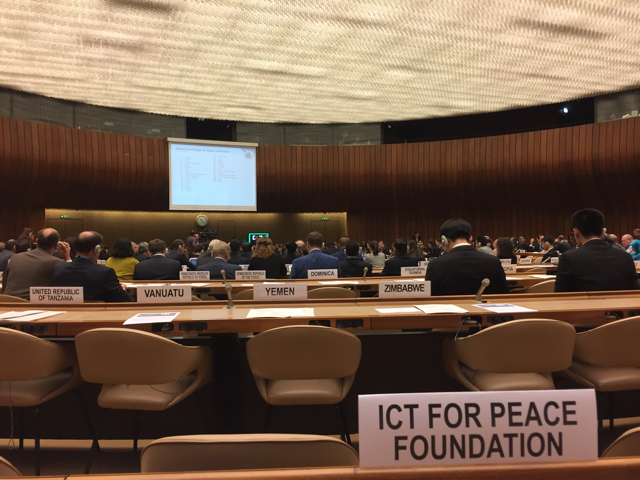From 13 to 17 November 2017, the UN’s Convention of Certain Conventional Weapons (CCW) Group of Governmental Experts (GGE) met at United Nations Offices at Geneva to discuss Lethal Autonomous Weapons Systems (LAWS) [aka ‘killer robots’]. Regina Surber, Emanuel Teicher and Daniel Stauffacher participated in the meetings. The Report by Emanuel Teicher you find here.
Please also find a paper on this subject by Regina Surber: Artificial Intelligence – LAWS and Peace Time Threats.
After three years of informal meetings (CCW Meetings of Experts on LAWS, 2014 – 2016) this represented the transition to a formal process. Eighty-six countries and a plethora of non-governmental organisations, including ICT4Peace, and other entities participated in the meetings.
At least in public, the most visible and outspoken group was the Campaign to Stop Killer Robots, represented by a sizable delegation in Geneva. The Campaign, a coalition of civil society groups coordinated by Human Rights Watch, has been driving the process with its call for a pre-emptive ban on the development, production and use of LAWS.
A chilling and dystopian seven-minute video titled ‘Slaughterbots,’ was released on the eve of the conference and also screened at a Campaign to Stop Killer Robots side-event in Geneva. It shows swarms of small drones using facial recognition technology and on-board explosives, selecting and firing on human targets without human guidance. The short was prepared by University of California, Berkeley professor Stuart Russell and funded by the Future of Life Institute.
The Institute has notably called for a ban of autonomous weapons systems and asked the UN to “protect us from all theses dangers” in two open letters signed by AI researchers and tech leaders, such as Stephen Hawking and Elon Musk. The film, featured by media all across the globe (e.g. CNN and the Swiss NZZ am Sonntag), garnered a lot of attention and set the tone for the public debate.
Inside the halls of the UN, however, delegations were debating the basics of LAWS (read more here.

